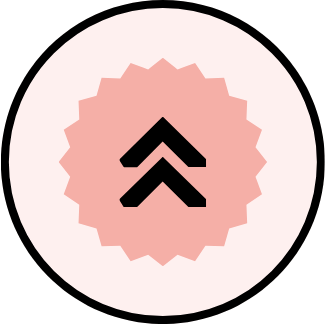As a digital entrepreneur, and even as a web designer, you can sometimes feel like people are speaking another language when they mention certain web design terms. It happens because sometimes we haven’t given a name to something we already know, or because the term we use isn’t the same in every country.
My clients often feel shy about asking me what Hosting and Domain mean because they think they should already know—but honestly, when I started, I had no idea either.
If you’ve decided it’s time to have your own website, this glossary has everything you need to know. By learning these terms, you’ll be able to express yourself more confidently with your designer (whether that’s me or someone else you hire), and make sure they understand exactly what you want to achieve.
Web glossary: everything you need to know to communicate with your designer (and not lose your mind in the process)
✦ Domain: A domain is a unique name that identifies your website on the Internet so it can be visited by any user. Example: unikaestudio.com
✦ Hosting: The server where all your website content is stored. Think of it as the “rent” your site pays to exist on the Internet.
✦ Backup: A backup (or safety copy) is a copy of all the files and data that make up your website, so you can restore it in case something goes wrong.
✦ Call to Action (CTA): The element that tells users what action to take on your site—buy, book, call, etc. On a webpage, the CTA usually appears as a button or link with text that encourages people to click and take the desired action.
✦ Captcha: Small tests that check if the person using the computer is a human and not a robot. They help prevent spam and junk submissions.
✦ SSL Certificate: A digital certificate that authenticates your website’s identity. Basically, it tells your visitors that your site is 100% safe. (It’s the little padlock you see next to the URL).
✦ CMS: A CMS (Content Management System) is software that allows you to edit and manage your website content. One of the most popular is WordPress, which is the one I use.
Fun fact: Big companies like Forbes, Spotify, The New York Times, and MTV News use WordPress.
✦ Favicon: The small icon that represents your site in browser tabs, bookmarks, or shortcuts on a device’s home screen.
✦ FAQ: Stands for Frequently Asked Questions. This section is where you answer the most common questions people have.
✦ Footer: The bottom section of a webpage, usually containing elements like social media buttons, navigation links, legal information, etc.
✦ Header: The top section of a webpage. It usually includes the logo, menu, search bar, and sometimes business info.
✦ Landing Page: A focused page designed to highlight something specific, like a new product, promotion, or service. Its goal is to convert visitors into leads or customers.
Unlike a regular website page, which has many options and information, a landing page has a single purpose: getting users to leave their details for a potential sale.
✦ Responsive: Refers to a design that adapts to different devices (desktop, tablet, mobile). The system detects the screen width and adjusts all page elements to provide a better user experience.
✦ Wireframe: A layout or sketch that visually represents the structure of a webpage. It helps define the content and positioning of blocks before the design phase.
Designed with ♥ by Unika Estudio | © 2020-2025 All rights reserved.


